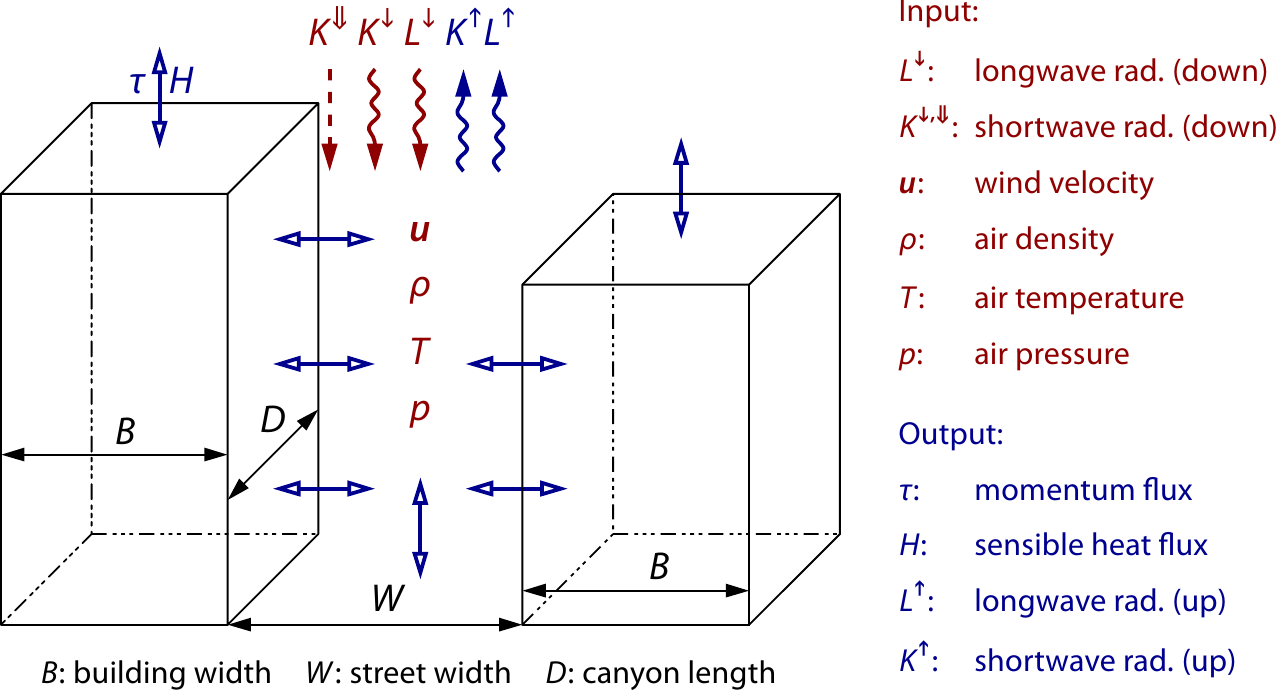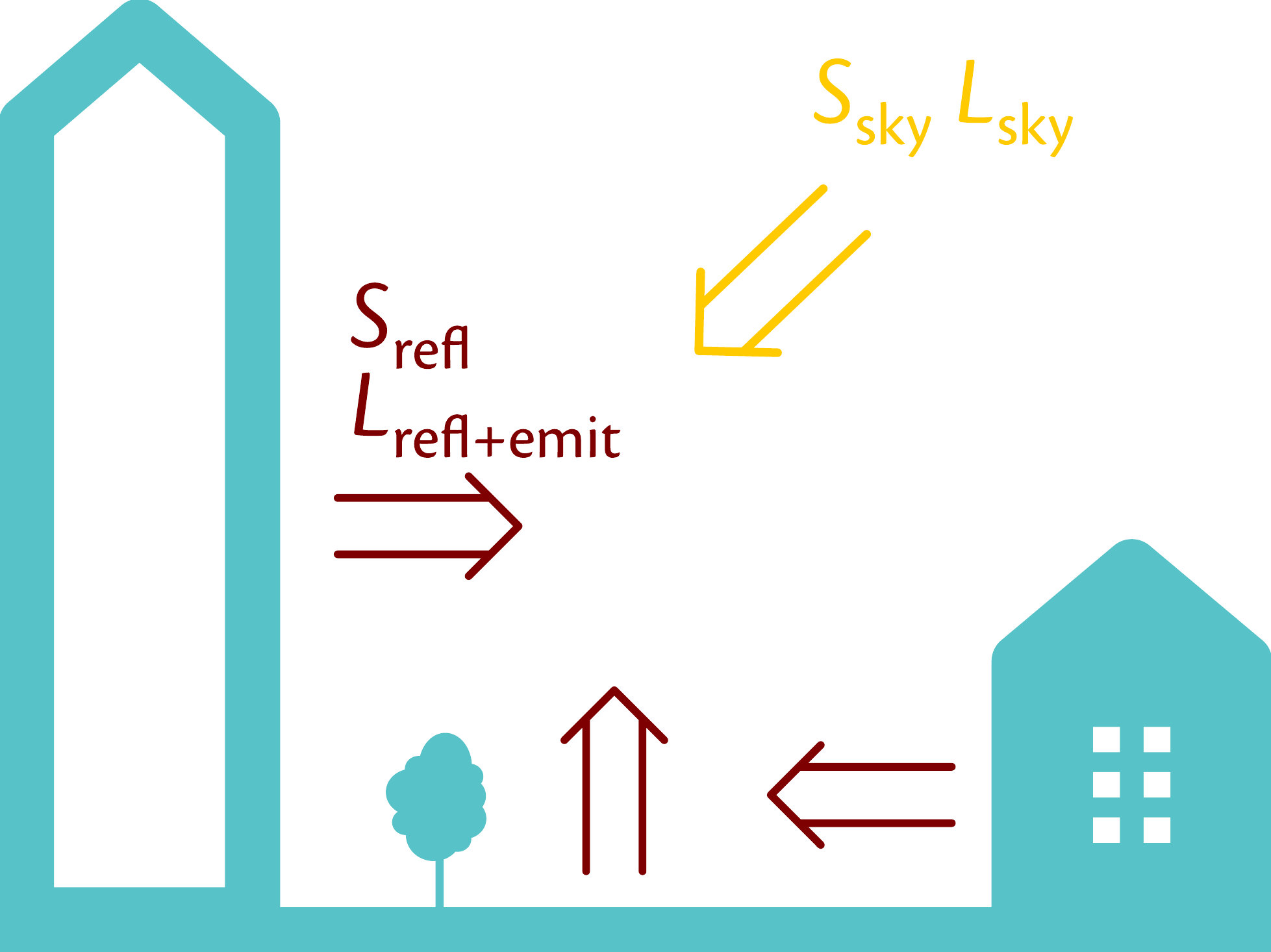Work package M5: Urban radiation and building parameterization
Contact information
Principal investigators:
Dr. Sebastian Schubert  ,
Prof. Dr. Christoph Schneider
,
Prof. Dr. Christoph Schneider 
Staff:
Dr. Mohamed Salim 
Institution: Humboldt-Universität zu Berlin, Geography Department (https://www.geographie.hu-berlin.de/en/professorships/climate_geography/)
Goals of WP-M5
Work program
WP-M5.1: Radiation fluxes at building-resolving resolution
This work package deals with the calculation of the diffuse longwave as well as the diffuse and direct shortwave radiation fluxes. Thus, this calculation provides crucial components to the energy balance of each urban surface. Our approach will include the casting of shadows and radiation exchange within the urban canopy. View factors for diffuse radiation exchange will be calculated via view factor algebra or via Monte Carlo ray tracing, respectively. Multiple reflections within the urban canopy are accounted for. The calculation of the direct shortwave radiation will be done via ray tracing. Both processes of the radiation exchange will optionally consider the effect of vegetation in the urban canopy.
WP-M5.2: Building concept for coarse resolution runs
In order to simulate large areas of a city with a lower resolution (~ 100m) with which single buildings are not resolved, we will implement an urban canopy parametrization (UCP) representing buildings as street canyons. In the UCP Double Canyon Effect Parametrization (DCEP), street canyons are characterized by its building and street width, its orientation as well as its building height distribution. The DCEP considers the energetic exchange between buildings and atmosphere on several vertical layers.
WP-M5.3: Radiation for non-building-resolving resolution
In addition to the general street canyon concept of DCEP described in work package M5.2, we will provide the radiation fluxes of DCEP at each urban surface element non-building resolving resolutions. Compared to work package M5.1, the computational complexity is much lower due to the effective representation of buildings.
Attachments (2)
-
WPM5_fig1_en.png
(103.6 KB) -
added by maronga 9 years ago.
wpm5_fig1
-
WPM5_fig2_en.png
(54.2 KB) -
added by maronga 9 years ago.
wpm5_fig2
Download all attachments as: .zip





